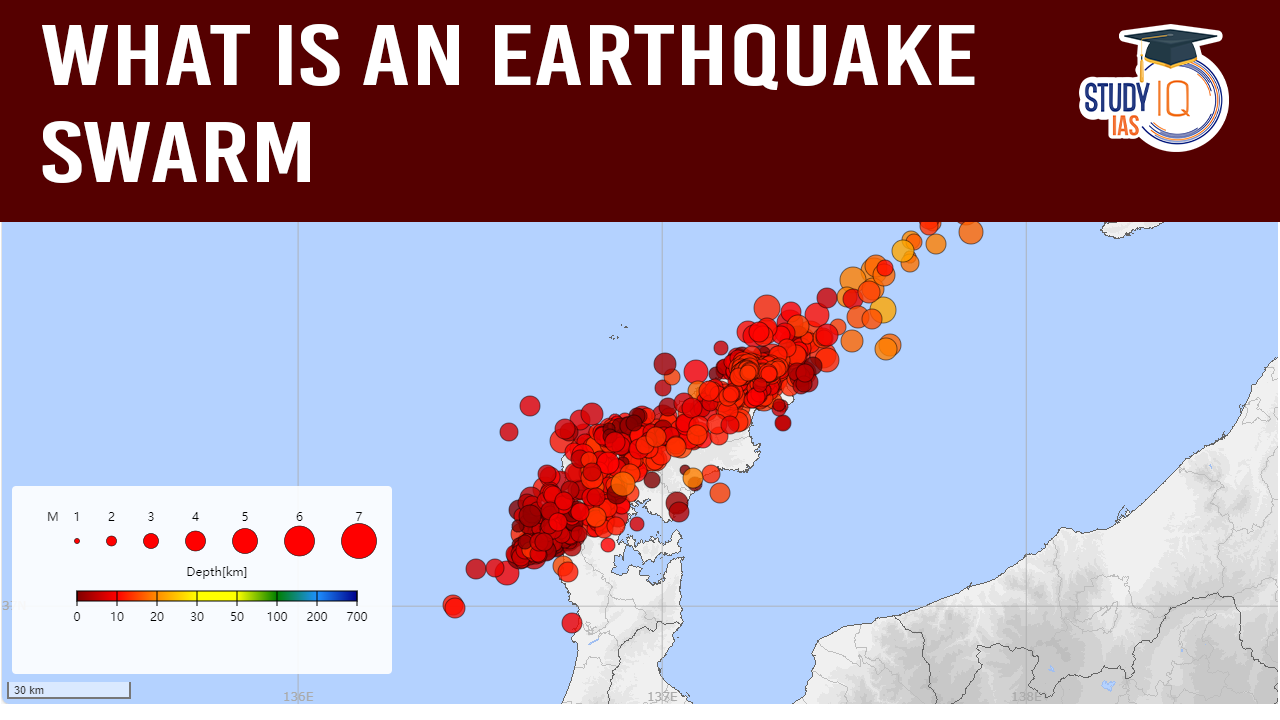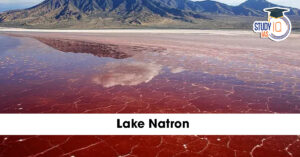Table of Contents
Context: A state of emergency has been declared on Greece’s Santorini and the nearby islands of Ios, Amorgos, and Anafi after a swarm of undersea earthquakes.
What is an Earthquake Swarm?
- An earthquake swarm refers to a sequence of multiple seismic events of comparable intensity that occur in a small geographic area over a short period of time.
- Unlike earthquake sequences, swarms lack a single large mainshock, and the tremors continue intermittently.
- Swarms are usually short-lived, but they can continue for days, weeks, or sometimes even months.
Causes of Earthquake Swarms
Earthquake swarms can be triggered by various geological and environmental factors, including:
- Volcanic Activity – Magma movement beneath the Earth’s surface can cause swarms, often signaling potential volcanic eruptions.
- Tectonic Stress – Gradual shifts in the Earth’s crust can release stress in clusters rather than a single major quake.
- Hydrothermal and Geothermal Processes – Underground fluids, such as water or gas, can weaken rock formations and trigger seismic activity.
- Human-Induced Activity – Activities like mining, fluid injection (as in geothermal energy production or wastewater disposal), and reservoir-induced seismicity (from large dams) can lead to earthquake swarms.
Effects of Earthquake Swarms
- Structural Damage – While individual quakes in a swarm are often moderate, repeated shaking can weaken buildings and infrastructure.
- Increased Seismic Hazard – Some swarms precede larger earthquakes, though not always.
- Public Concern and Emergency Response – Extended swarms can cause fear and require preparedness efforts, even if they don’t lead to a major quake.
Earthquake Swarms in India
- Peninsular India has experienced earthquake swarms in the past.
- Cause: Water Seepage and Pressure Buildup
- Heavy rainfall increases the water table, leading to water seeping into underground rock fractures.
- A 2008 study found that for every 10-meter rise in the water table, the pressure inside rocks increases by 1 atmosphere (atm).
- This pressure buildup is released in the form of earthquake swarms.


 Places in News for UPSC 2026 for Prelims...
Places in News for UPSC 2026 for Prelims...
 Lake Natron: Location, Features, Wildlif...
Lake Natron: Location, Features, Wildlif...
 Erra Matti Dibbalu Added to UNESCO Tenta...
Erra Matti Dibbalu Added to UNESCO Tenta...

























